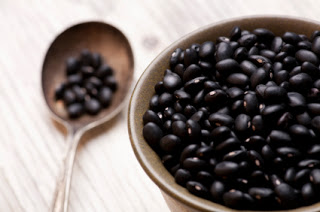A few couple months ago I assigned Cooking Homework. November’s homework was to start slow cooking. I did and use our slow cooker every weekend. I don’t love chopping onions with my morning coffee but a few minutes of work and you have chili, soup or a delicious stew waiting for you. Last month, I vowed to embrace my neglected juicer and to break out unused cookbooks. I’ve definitely juiced more this month. I would encourage fellow juicers reading this to consider using parsnips, papaya is good too, oh and young coconuts. I’m happy to talk juicing because I didn’t cook anything from Healthy Hedonist or Appetite for Reduction. Nada.
I read something over at Verging on Serious that may explain my partial failure. Cameo wrote a great post on making changes and listed these facts from a video series she watched:
Adoption of one new habit at a time- 85% chance of success
Adoption of two new habits at once- 35% chance of success
Adopting of three new habits at once- 10% chance of success.
In my assignment I did something I urge clients not to, I tried to do too much at once thus I’m in the 65% failure faction. So this month, there’s only one assignment I’m throwing out there, beans. Beans would probably make my list of the top 10 healthiest foods; I love Mexican-inspired dishes, bean dips and bean salads. I’m not fond of canned foods so I’ve been using the Fig Food boxed beans. I really should soak and cook my own beans (less packaging, less salt, less expensive) but I don’t. It could be that I lived on black beans and brown rice in college and when I say lived on I mean it. As scarring as this repetitive eating was the reason I don’t soak beans is really that I’m too lazy. You may have sniffed out that I use lentils and split peas often; they are lazy person’s legumes (no soaking required).
I decided it was time to change my ways reading about bean soaking on More than Cereal. Adele jokes that she used to think of soaking beans as only something a “special” type of person does. However, like other commonly circumvented cooking chores, it’s really not that involved. I did it at 18, in college, and I assure you I wasn’t capable of doing much else at the time.
If you’re contemplating beak soakage, here’s what you do:
Initiate the process the night before (or morning) you plan to cook beans. Put beans in a large pot, under a few inches of water, and refrigerate. Remove any floating beans as this indicates they’re old. No senior beans allowed. Drain the water (important as you are draining out gassiness), cover with fresh water and cook. I love this slideshow from Serious Eats. Adele and S.E.. concur that cooked beans can be frozen for later use. Love that.
So we have good odds, an 85% chance of soaking success, are you with me? If you’re sitting back a smug soaker, I’m sure there’s something else you been putting off. What’s something you buy that you can make at home or DIY? You have until April.


